Type Command | Size 105,000 (1876) Founded 1756 | |
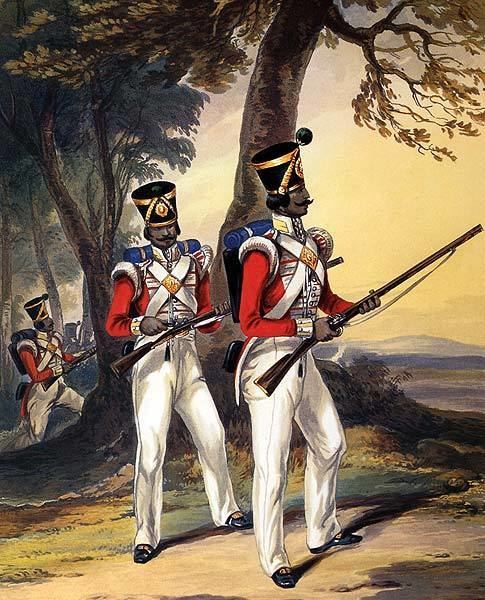 | ||
Active 1756–1895 (as the Bengal Army)1895–1908 (as the Bengal Command of the Indian Army) Similar British Indian Army, Madras Army, Bangladesh Armed Forces, Bangladesh Army, Bangladesh Navy | ||
Major gen sunil yadav reacts on west bengal army deployment
The Bengal Army was the army of the Bengal Presidency, one of the three presidencies of British India within the British Empire.
Contents
- Major gen sunil yadav reacts on west bengal army deployment
- Origins
- Under East India Company
- 1857
- Post Mutiny
- Ethnic composition
- Regular regiments
- Irregular units
- Bengal Horse Artillery
- Bengal Native Foot Artillery
- Engineers
- Other
- Commanders
- References
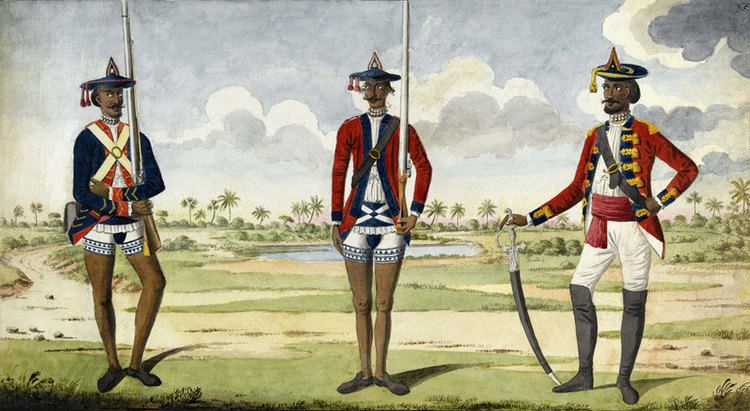
The Presidency armies, like the presidencies themselves, belonged to the East India Company (EIC) until the Government of India Act 1858 (passed in the aftermath of the Indian Rebellion of 1857) transferred all three presidencies to the direct authority of the British Crown.
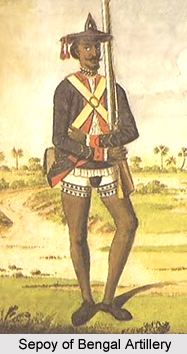
In 1895 all three presidency armies were merged into the Indian Army.
Origins
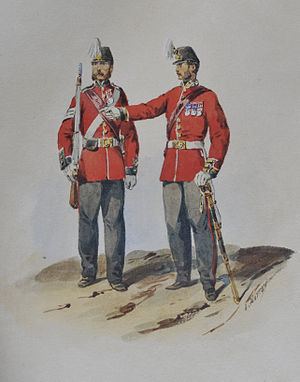
The Bengal Army originated with the establishment of a European Regiment in 1756. While the East India Company had previously maintained a small force of Dutch and Eurasian mercenaries in Bengal, this was destroyed when Calcutta was captured by the Nawab of Bengal on 30 June that year.
Under East India Company
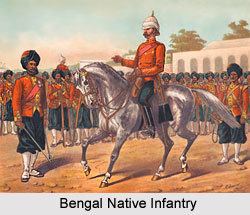
In 1757 the first locally recruited unit of Bengal sepoys was created in the form of the Lal Paltan battalion. It was recruited from Bhumihar, Bihari Rajputs and Pathan soldiers that had served in the Nawab's Army from Bihar and the Awadh (Oudh). There were actually no soldiers from the modern Bengal region. Drilled and armed along British army lines this force served well at the Battle of Plassey in 1757 and 20 more Indian battalions were raised by 1764. The EIC steadily expanded its Bengal Army and by 1796 the establishment was set at three battalions of European artillery, three regiments of European infantry, ten regiments of Indian cavalry and twelve regiments (each of two battalions) of Indian infantry.
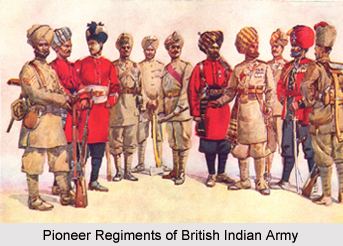
In 1824 the Bengal Army underwent reorganisation, with the regular infantry being grouped into 68 single battalion regiments numbered according to their date of establishment. Nine additional infantry regiments were subsequently raised, though several existing units were disbanded between 1826 and 1843. On the eve of the First Afghan War (1839–42) the Bengal Army had achieved a dominant role in the forces of the HEIC. There were 74 battalions of Bengal regular infantry against only 52 from Madras, 26 from Bombay and 24 British (Queen's and Company). On average an inch and a half taller and a stone heavier than the southern Indian troops, the Bengal sepoy was highly regarded by a military establishment that tended to evaluate its soldiers by physical appearance.
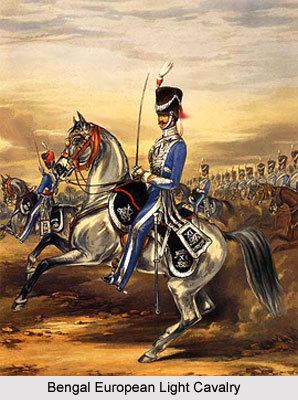
A new feature in the Bengal Army was the creation of irregular infantry and cavalry regiments during the 1840s. These were permanently established units but with less formal drill and fewer British officers than the regular Bengal line regiments. The main source of recruitment continued to be high caste Brahmins and Rajputs from Bihar and Oudh, although the eight regular cavalry regiments consisted mainly of Muslim Pathan sowars. During the 1840s and early 1850s numbers of Nepalese Gurkhas and Sikhs from the Punjab were however accepted in the Bengal Army. Both Gurkhas and Sikhs served in separate units but some of the latter were incorporated into existing Bengal infantry regiments.
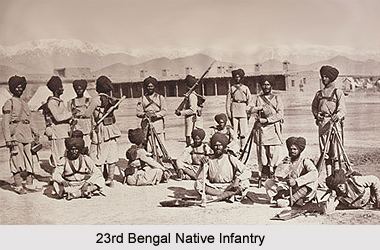
Another innovation introduced prior to 1845 was to designate specific regiments as "Volunteers" - that is recruited for general service, with sepoys who had accepted a commitment for possible overseas duty. Two of these BNI regiments were serving in China in 1857 and so escaped any involvement in the great rebellion of that year.
1857
A total of 64 Bengal Army regular infantry and cavalry regiments rebelled during the Indian Mutiny, or were disbanded after their continued loyalty was considered doubtful. From 1858 onwards the actual high-caste Awadhi and Bihari Hindu presence in the Bengal Army was reduced because of their perceived primary role as mutineers in the 1857 rebellion. The new and less homogeneous Bengal Army was essentially drawn from Punjabi Muslims, Sikhs, Gurkhas, Baluchis and Pathans, although twelve of the pre-mutiny Bengal line infantry regiments continued in service with the same basis of recruitment, traditions and uniform colours as before.
A largely unspoken rationale was that an army of diverse origins was unlikely to unite in rebellion.
Post Mutiny
In 1895 the three separate Presidency Armies were abolished and the Army of India was divided into four commands, each commanded by a lieutenant-general. These comprised Madras (including Burma), Punjab (including the North West Frontier), Bengal and Bombay (including Aden). The Bengal infantry units in existence at the end of the Presidency era continued as the senior regiments (1st Brahmans to 48th Pioneers of the newly unified Indian Army.
Ethnic composition
Prior to 1857, and despite the name, the actual ethnic Bengali presence was minimal to non-existent. The Bengal Army of the East India Company was mainly recruited from high castes living in Bihar and the Awadh, especially Bihari Rajputs and Bhumihars who were referred to as Purbiyas".
Both prior to and following 1857, the Bengal Army included what were to become some of the most famous units in India: Skinner's Horse from Bengal, the Gurkhas from the Himalayas and the Corps of Guides on the Khyber-Pakhtunkhwa.
Regular regiments
Irregular units
Bengal Horse Artillery
The following units were absorbed into the Royal Horse Artillery after the passing of the provisions of the Government of India Act 1858, becoming part of the British Army:
Bengal Native Foot Artillery
Engineers
Regular regiments
Irregular units
Other
1st Bengal Military Police Battalion
Commanders
Because the Bengal Army was the largest of the three Presidency Armies, its Commander-in-Chief was, from 1853 to 1895, also Commander-in-Chief, India.
Commander-in-Chief, Bengal Command
